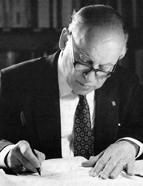

Breve Introdução a um Problema (The Meaning of History: A Brief Introduction to a Problem). The jury awarded him a grade of 16. The course, which, as its name suggests, linked two scientific fields, sparked in the bril tudent an attraction to post-Hegelian German philosophy, especially the works of Wilhem Dilthey, Heinrich Rickert and Wilhem Windelband. As he himself wrote in the text he called his “intellectual testament”, “it was towards the philosophy of science that my mind was oriented at that time, convinced in terms of the future that I had found my true path in it!” (Idem, pp. 12-13). However, in his extra-curricular reading throughout his education, he became clearly aware that historical research needed to be renewed, influenced by the methodological and critical proposals of the then dominant Annales school, in order for history to be more scientific than ideological. This sensitivity is evident in his degree thesis, which he would develop when he finally devoted himself to the profession of historian. Although the thesis was not published, it was on its foundations that he based his teaching of the subject of Methodology of History, which he later taught at the Faculdade de Letras [School of Arts and Humanities], and which came to light under the title History and Historical Knowledge (1968), expanded and presented in a didactic form.
Let us return to Santarém. The love he always felt for the city where he was born was expressed in various ways and in different contexts. He dedicated his first works as a historian to it, with very expressive titles: Historical essay on the significance and value of the capture of Santarém from the Moors in 1147, published in 1947; Santarém in the History of Portugal and Santarém. History and Art, both from 1950. These inaugural works of his long career also marked the taste he would cultivate for regional and local history, as we shall see below.
This work is financed by national funds through FCT - Foundation for Science and Technology, I.P, in the scope of the projects UIDB/04311/2020 and UIDP/04311/2020.
